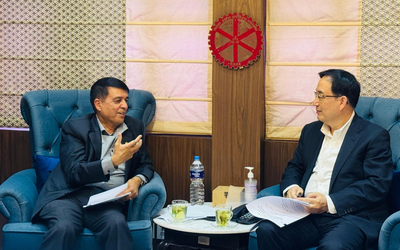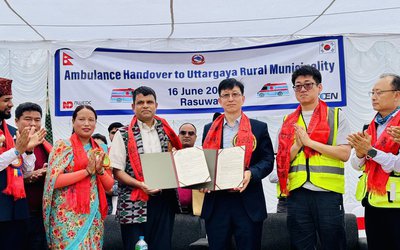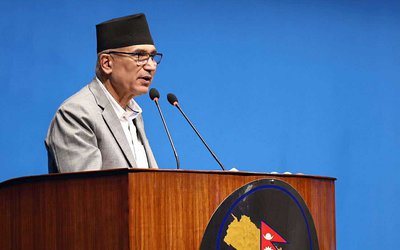More on Economy




The facts are indeed rosy.
In the last fifteen years, the average income of Nepalese has increased by five times.
The per capita income rose from Rs 7690 to Rs 41,659.
Significantly, the average income of upper 20 percent of population (in terms of income) rose by five times while that of lower 20 percent rose by seven times.
“This shows that income inequality is also reducing,” said Uttam Narayan Malla, director general of Central Bureau of Statistics (CBS).
The CBS, with the support of World Bank, had conducted the Nepal Living Standard Survey (NLSS) III.
But the fact that the remittance income has been singled out as the most important driving factor for such progress has been a cause of grave concern.
“Progress depending on remittance alone will not be sustainable. We have seen an example in Pakistan in 1970s when for short time the poverty there had dramatically fallen due to rise in remittances,” said Dr. Dilli Raj Khanal, an economist.
“But when the Gulf countries started importing labourers from countries other than Pakistan as well, its share fell and it suffered a lot,” he added.
Concurs another economist Dr. Posh Raj Pandey. “I can’t agree that remittance, by itself, can lead to sustainable progress. Until and unless remittance income is invested in productive sectors, that will not be durable,” he said.
And that is what has not been happening here. The data show that Nepalese use almost 80 percent of their income on consumption while only 6 to 7 percent are used for savings.
The little amount of investment they make is also made on unproductive sector.
The NLSS III states that 56 percent of Nepalese households receive remittance income.
Poverty
Officials have been saying that the rise in remittance is also going to bring down the level of poverty by a significant margin.
Currently, 25 percent of population live below poverty line.
“At present, we are calculating the new rate of poverty. The early indications point that this figure will reduce significantly from the current level of 25 percent,” said CBS director general Uttam Narayan Malla.
Many have already started predicting that the poverty will come down to around 13 percent.
And all this due to the increase in remittance income.
Presently, around 1000 Nepalese leave country daily in search of jobs. They mostly go to the Gulf countries.
The total amount of money they send back home has crossed Rs 260 billion annually.
But since the foreign employment depends on many factors – most of which are beyond the control of the country – its success will be highly vulnerable.






